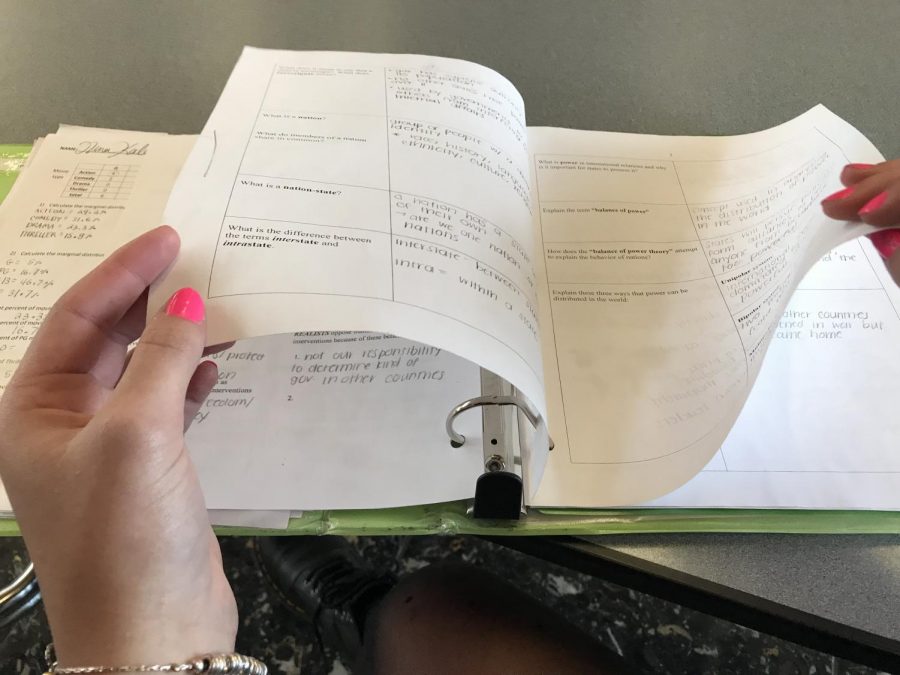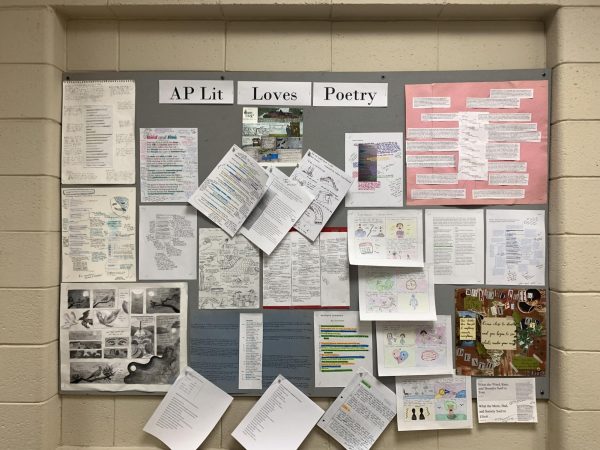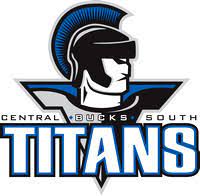A Student’s Guide to AP Courses
As young, eager eighth-graders transform through warm, summer days into daunting high school freshmen, one thing remains the same: their desire to excel in school.
Most high school students crave to succeed in all of their courses. Graduating from high school, and doing so with an impressive academic record, prepares many students for a promising future.
For the students of Central Bucks High School South, their aspirations are quite similar.
More specifically, a significant number of CB South students direct their attention to not only their grades, but to their participation in more challenging courses: Advanced Placement.
Advanced Placement classes are designed by College Board, the creators of the SAT.
According to Halle Edwards, an author of the website “Prep Scholar”, AP courses “are designed to give [students] the experience of an intro-level college class while [they’re] still in high school.”
CB South offers a total of 21 AP classes throughout the course of high school. Currently, however, there are 38 courses and exams available within the Advanced Placement program, yet stated by College Board, the average number of AP courses available at a high school is eight.
According to the website, “Princeton Review”, “Advanced Placement classes show admissions officers that you’re ready for college-level work,” including that, “taking an AP class and getting a B is often a better choice than getting an A in a regular course”.
Grading is on a 4.0 scale at CB South, with AP classes being weighted by 1.0. Therefore, if a student was to get an A in an AP class that would be a 5.0 on the grading scale, while an A in an academic class would remain a 4.0.
Usually AP courses are taken following the completion of honors courses to further challenge oneself.
Olivia Himmelstein, a senior at CB South, explained that in middle school she had found AP classes “intimidating,” only deciding to take one after she excelled in her honors math class.
Advanced Placement courses allow students to earn college credits so that they do not have to take that same course in college. Towards the end of the AP course, there is an option given to the students to take the AP exam or not. The AP exam is graded on a five-point scale, with a five being extremely qualified.
According to College Board, “Many colleges and universities grant credit and placement for scores of 3, 4 or 5; however, each college decides which scores it will accept.”
With the opportunity given to earn credit for college courses, AP classes are understandably taught differently than honors and academic courses.
“The AP courses I have taken are much more fast-paced than honors courses,” said Erin Mayeros, a senior at CB South. Mayeros also elaborated on the pace of these courses, explaining, “We can cover about twice as many units in an AP course than a regular course,” adding that at times it can be “overwhelming.”
Sophomore Madison Massaro agreed, explaining how the AP European history tests are “a lot harder than academic classes with a lot less time to study”.
Mrs. Denice Dugan, an AP English teacher at Pennridge High School, explained that compared to an academic class, her AP course involves “more analysis of the literature and more sophisticated writing,” also adding that an AP class goes more in depth, “it’s more than just teaching the facts, the history. It’s the ‘why’ questions.”
Dugan also elaborated on the types of students within an AP class. She explained that AP students are typically more motivated and self-directed than students in academic courses: “they are college bound students looking for college credit which can allow them to graduate early from college, or take more classes.”
CB South Senior, Kelly Lenskold, chose to take AP Computer Science Principles to have a more impressive transcript. She chose this particular AP course because she had heard from prior seniors that it was “the easiest AP class”.
Although the reasons for choosing to take an AP course varies from student to student, the outcome of the class is always similar, offering a multitude of benefits to students that take them, other than just college credit.
After taking three AP classes throughout high school, Erin Mayeros believes that her advanced placement courses were excellent for challenging herself, calling it a “great learning opportunity for students,” as well.
“I hope to acquire better studying and learning habits, as well as experience in more challenging classes,” Madison Massaro said about her AP European history class that she is currently taking.
Whether an AP class is taken to earn more credit in order to graduate early or to simply raise one’s GPA, a lot of student responsibility goes into an Advanced Placement course, while a great deal of success can come out.






